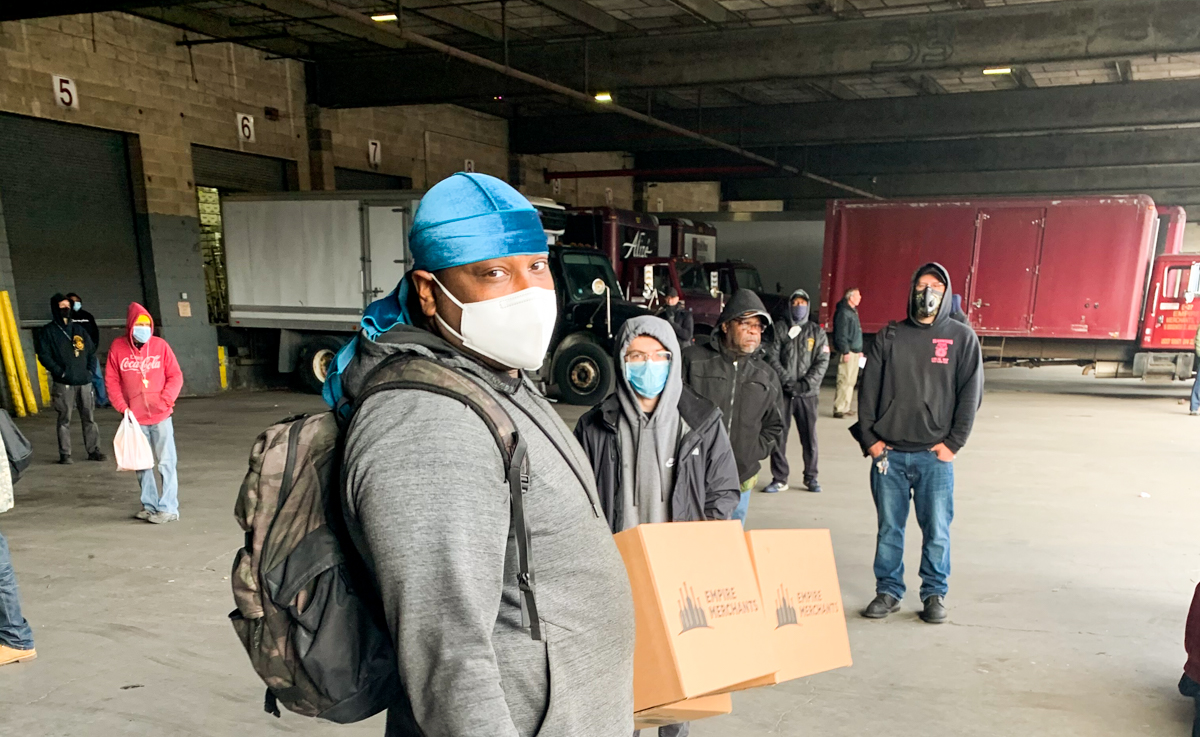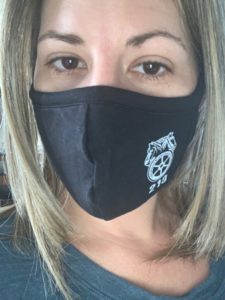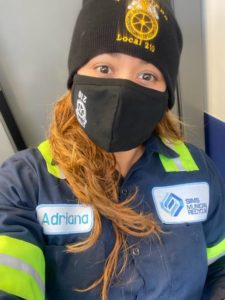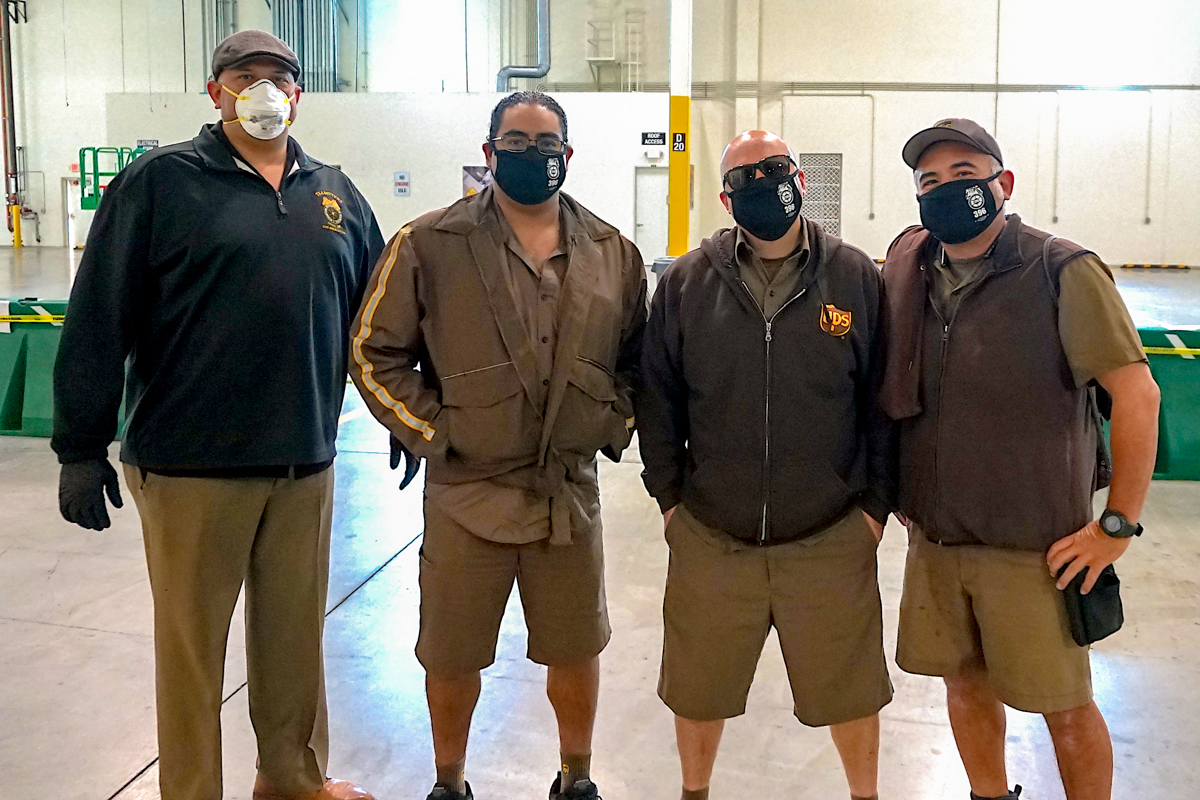
Information for non-union workers
Your employer is responsible for providing a workplace that is free from recognizable hazards and providing the equipment and resources you need to do your job safely. But unfortunately, when management puts profits ahead of workers’ health, we need to keep ourselves and our coworkers safe.
If you are a Teamster member, contact your union representative or visit the Teamsters COVID-19 website.
If you are not a union member, please fill out this form and read below for information on your rights at work.
Steps You Can Take
Wash your hands with soap and water regularly, practice good physical distancing, and cover your face to avoid getting each other sick (even with a simple bandana).
Stay home while you’re sick or after you’ve come into close contact with someone who is infected with COVID-19.
Organize! Workers around the country are circulating petitions, blowing the whistle on unsafe companies, and going on strike to demand appropriate action to keep workers safe.
Your Rights
The National Labor Relations Act (NLRA) gives workers in the private sector the right to act together to improve their working conditions, wages, and benefits. Actions you take collectively with your coworkers to better your job are protected, like starting a petition with your coworkers or speaking to the press about your working conditions. If you are a union member with a no-strike clause, contact your union representative because your rights may be different.
- You can discuss all workplace issues including working conditions, taking action together, etc. on the floor as long as you don’t keep others from doing work.
- You have the right to picket, handbill, chant and demonstrate in front of your workplace as long as you are peaceful, and you do not block access into or out of the warehouse. If you do this, make sure to keep each other safe by staying at least 6 feet apart, covering your faces (even with a cloth mask) and practice good physical distancing.
- Federal law protects your right to strike against management illegally threatening, harassing or disciplining you to stop you from standing up for COVID-19 protections or other improvements to your workplace.
- You have the right to hand out leaflets while you are off the clock and in non-work areas
- You have the right to wear stickers or buttons that say you are organizing to improve your working conditions
The right to refuse unsafe work
Federal safety laws also provide protections for workers who refuse to do unsafe work. The Occupational Safety and Health Act provides protection from discipline or retaliation for refusing to perform unsafe work if all of the following conditions are met:
- Where possible, you have asked the employer to eliminate the danger, and the employer failed to do so; and
- You refused to work in “good faith.” This means that you must genuinely believe that an imminent danger exists; and
- A reasonable person would agree that there is a real danger of death or serious injury; and
- There isn’t enough time, due to the urgency of the hazard, to get it corrected through regular enforcement channels, such as requesting an OSHA inspection.
Some state laws offer even stronger protections for workers who refuse to perform unsafe work. Check with the Department of Labor in your state for more information.
Your rights to a safe workplace
Every company has a legal responsibility to provide a workplace that is “free from recognized hazards likely to cause death or serious physical harm.” The Occupational Safety and Health Administration (OSHA) has published a document called “Guidance on Preparing Workplaces for COVID-19,” which includes recommendations for employers to improve safety at their facilities during the COVID-19 pandemic. If your employer is not taking adequate steps to keep you and your coworkers healthy and safe, you can file a complaint with OSHA online or over the phone.
OSHA recognizes that in order to keep workplaces safe, workers need to be able to speak up and report hazards in their workplace to authorities without threats of retaliation. This is why it is illegal for an employer to retaliate against workers who report hazards in their workplace to OSHA. You can find out more about OSHA’s whistleblower protections at WhistleBlower.gov.
Paid Sick Leave
 Staying home from work for some period of time is something that many workers are going to have to do in order to keep themselves, their coworkers, and their families safe during the COVID-19 pandemic. Missing pay can be a major hardship for a lot of workers, but fortunately new laws mandate paid sick leave for some workers and expanded unemployment benefits for workers impacted by COVID-19.
Staying home from work for some period of time is something that many workers are going to have to do in order to keep themselves, their coworkers, and their families safe during the COVID-19 pandemic. Missing pay can be a major hardship for a lot of workers, but fortunately new laws mandate paid sick leave for some workers and expanded unemployment benefits for workers impacted by COVID-19.
On March 18, Congress passed the Families First Coronavirus Response Act (FFCRA) which covers workplaces with between 50 and 500 employees. FFCRA requires that employers provide:
- Two weeks (up to 80 hours) of paid sick leave at the employee’s regular rate of pay where the employee is quarantined and/or experiencing COVID-19 symptoms and seeking a medical diagnosis; or
- Two weeks (up to 80 hours) of paid sick leave at two-thirds the employee’s regular rate of pay because the employee has a bona fide need to care for an individual subject to quarantine, or to care for a child whose school or child care provider is closed or unavailable for reasons related to COVID-19; and
- Up to an additional 10 weeks of paid expanded family and medical leave at two-thirds the employee’s regular rate of pay where an employee, who has been employed for at least 30 calendar days, needs leave to care for a child whose school or child care provider is closed or unavailable for reasons related to COVID-19.
More information on who is eligible is available from the US Department of Labor.
Unemployment Benefits
Congress has also provided funding for expanded unemployment benefits for workers impacted by COVID-19. These expanded benefits fall into two categories:
- Weekly benefits for all unemployed workers, unemployed for any reason, are increased by $600 a week for up to six months and adds 13 weeks of benefits on to the number of weeks a state currently pays benefits.
- The law expands coverage for workers not qualified for regular unemployment benefits, including workers who have exhausted regular unemployment benefits, independent contractors, sole proprietors or anyone who would not qualify for regular benefits. These workers are now entitled to unemployment benefits where:
- An employer temporarily ceases operations due to COVID-19, preventing employees from coming to work;
- A worker is quarantined with the expectation of returning to work after the quarantine is over; and
- A worker leaves employment due to a risk of exposure or infection or to care for a family member (different states are interpreting eligibility for this in different ways so please make sure to check with your state’s unemployment insurance program for details in your state before leaving your job).
Each state administers a separate unemployment insurance program, and there are some significant differences in how state administrators choose to interpret exactly who is covered. For more information regarding rules in your state, contact with your state’s unemployment insurance program.


